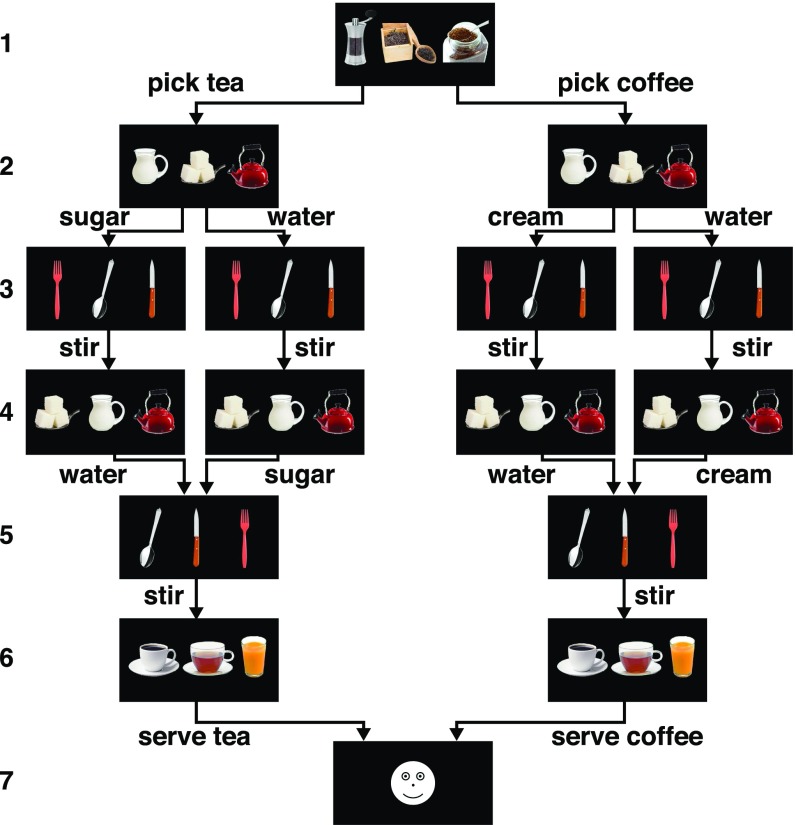Fig. 2.
The coffee–tea making task. Each trial consisted of a sequence of six decisions followed by feedback (indicated by digits on Left). Each decision comprised three images of different items corresponding to three possible actions (state 1: coffee, pepper, tea; state 2: cream, sugar, water; state 3: fork, spoon, knife; state 4: sugar, water, cream; state 5: spoon, knife, fork; state 6: prepared coffee, prepared tea, orange juice). For each decision, subjects selected one of the three actions by pressing a spatially corresponding button. Each decision always entailed selecting between the same three actions, but the positions of the images within each state varied across and within trials. For example, state 1 always entailed a choice between coffee, tea, and pepper, but the locations of these three items varied from trial to trial. Application of the task rules resulted in execution of four different task sequences. Arrows indicate allowable actions; the arrows diverge from states in which the action must be remembered to complete the sequence correctly (e.g., state 1 to state 2), and converge onto states when that information is no longer needed (e.g., state 4 to state 5). State 7 indicated correct (happy face) or incorrect (sad face) performance.

